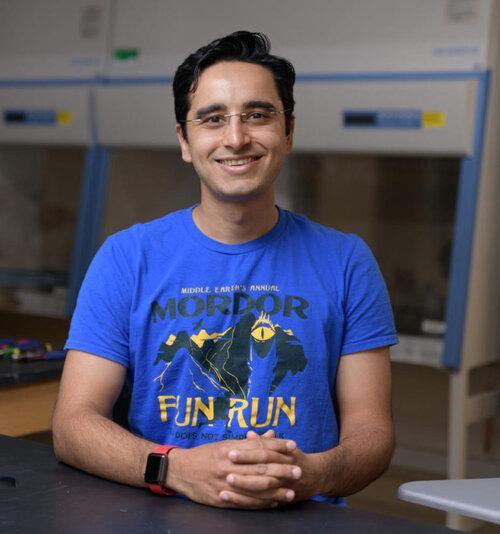Dewatering of Cellulose Nanofibrils using Ultrasound
Jun 02, 2022 — Atlanta, GA

Saad Bhamla is an assistant professor of biomolecular engineering at Georgia Tech.
Abstract: Although cellulose nanomaterials have promising properties and performance in a wide application space, one hinderance to their wide scale industrial application has been associated with their economics of dewatering and drying and the ability to redisperse them back into suspension without introducing agglomerates or lose of yield. The present work investigates the dewatering of aqueous suspensions of cellulose nanofibrils (CNFs) using ultrasound as a potentially low-cost, non-thermal, and scalable alternative to traditional heat-based drying methods such as spray drying. Specifically, we use vibrating mesh transducers to develop a direct-contact mode ultrasonic dewatering platform to remove water from CNF suspensions in a continuous manner. We demonstrate that the degree of dewatering is modulated by the number of transducers, their spatial configuration, and the flow rate of the CNF suspension. Water removal of up to 72 wt.% is achieved, corresponding to a final CNF concentration of 11 wt.% in 30 min using a two-transducer configuration. To evaluate the redispersibility of the dewatered CNF material, we use a microscopic analysis to quantify the morphology of the redispersed CNF suspension. By developing a custom software pipeline to automate image analysis, we compare the histograms of the dimensions of the redispersed dewatered fibrils with the original CNF samples and observe no significant difference, suggesting that no agglomeration is induced due to ultrasonic dewatering. We also perform SEM analysis to evaluate the nanoscale morphology of these fibrils showing a width range of 20 nm–4 um. We estimate that this ultrasound dewatering technique is also energy-efficient, consuming up to 36% less energy than the enthalpy of evaporation per kilogram of water. Together with the inexpensive cost of transducers ( $1), the potential for scaling up in parallel flow configurations, and excellent redispersion of the dewatered CNFs, our work offers a proof-of-concept of a sustainable CNF dewatering system, that addresses the shortcomings of existing techniques.
The complete published paper can be found in the May 24 issue of Cellulose.
Walter Rich




